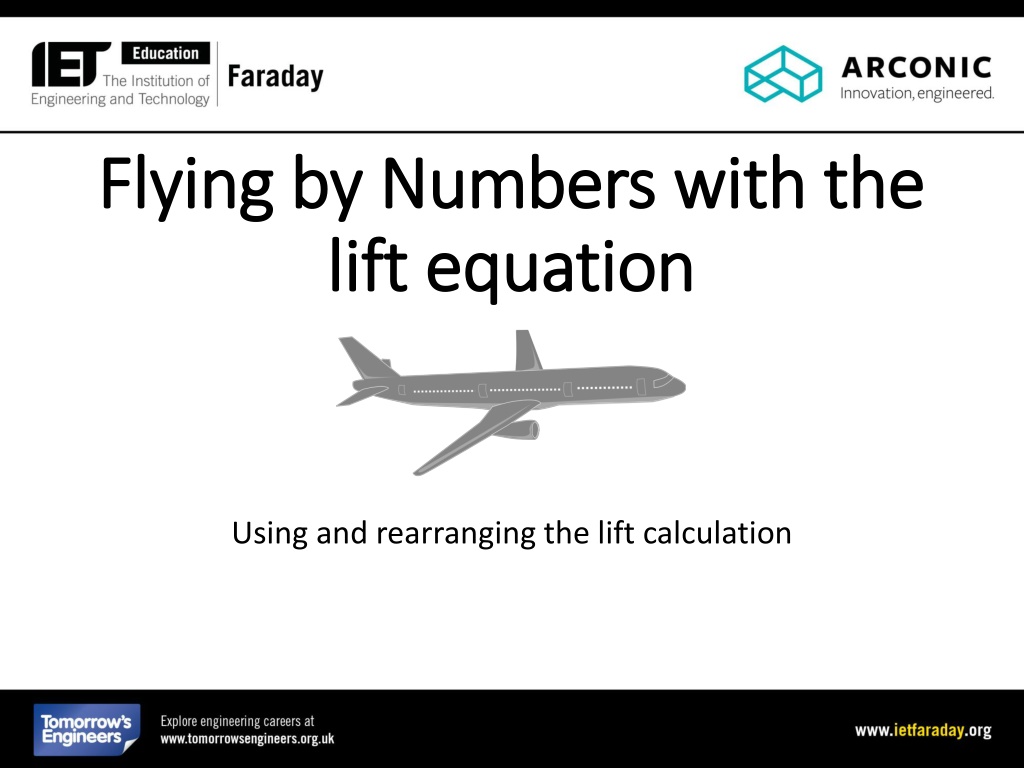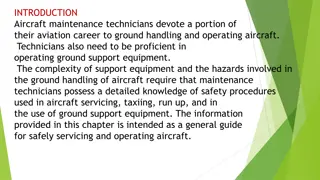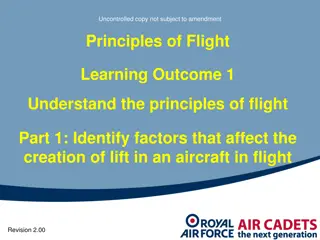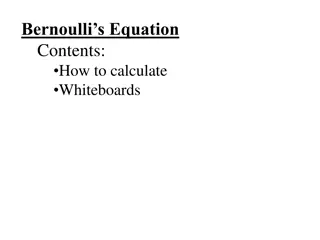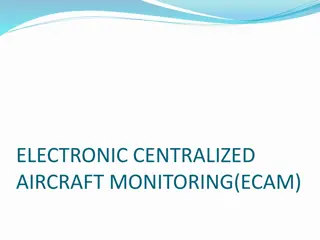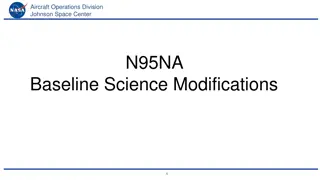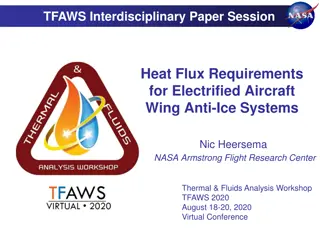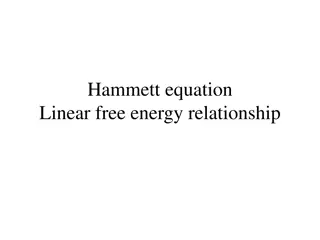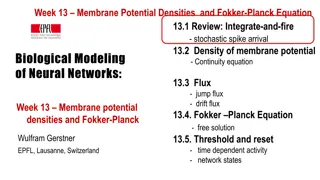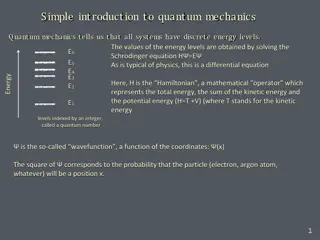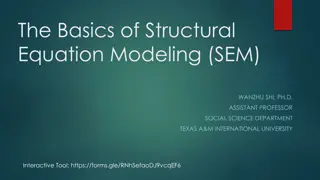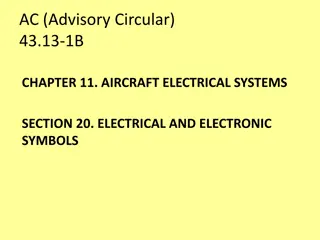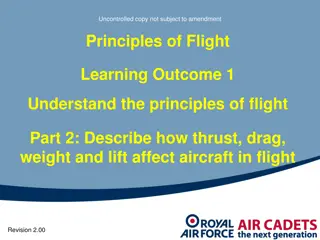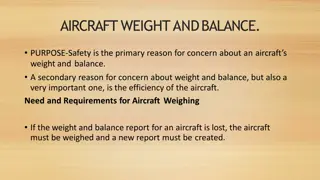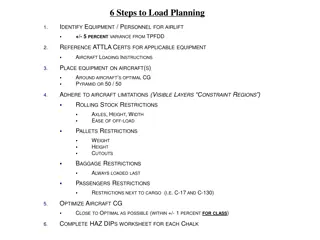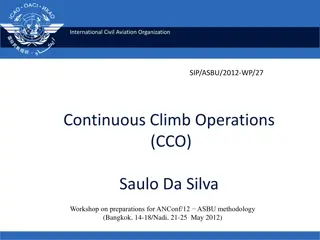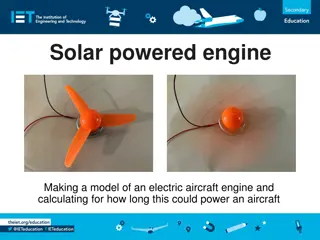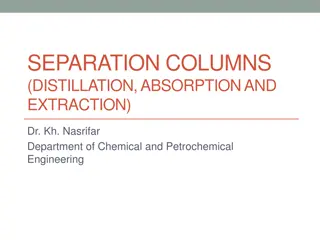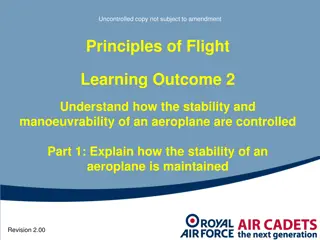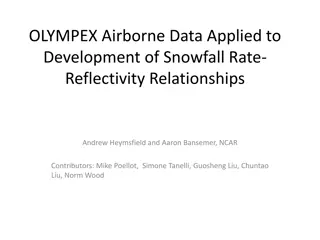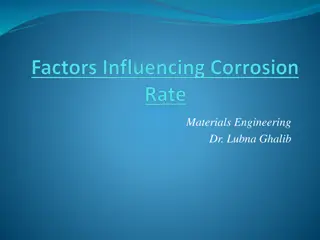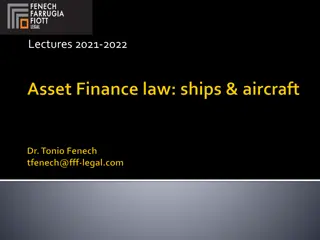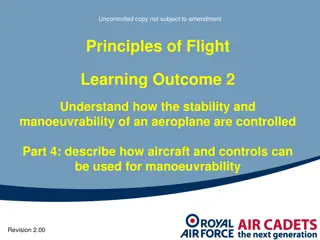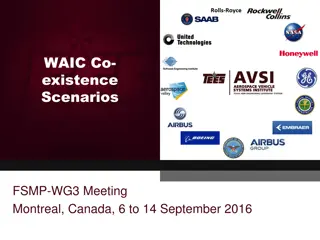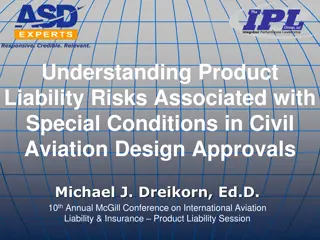Understanding Aircraft Lift Equation and Factors Influencing Lift
Aircraft lift is the force that keeps an airplane airborne, essential for flight. The lift formula involves elements like air density, velocity, and wing area. Factors affecting lift include angle of attack and coefficient of lift. Changes in altitude impact air density, influencing lift calculations. Understanding these concepts is crucial for safe and efficient flight operations.
Download Presentation

Please find below an Image/Link to download the presentation.
The content on the website is provided AS IS for your information and personal use only. It may not be sold, licensed, or shared on other websites without obtaining consent from the author. Download presentation by click this link. If you encounter any issues during the download, it is possible that the publisher has removed the file from their server.
E N D
Presentation Transcript
Flying by Numbers with the Flying by Numbers with the lift equation lift equation Using and rearranging the lift calculation
What is Lift? What is Lift? Lift is the force that holds an airplane in the air For level flight, the lift must equal the weight of the aircraft Making an aircraft lift off the ground needs careful calculations Which factors do you think influence the lift of an airplane?
The Lift Formula The Lift Formula L = d x v2x s x CL/ 2 Where: L = lift; for level flight this equals the weight of the aircraft d = density of the air. This changes with altitude the higher you get, the thinner (less dense) the air is v = velocity of the aircraft s = wing area of the aircraft CL= coefficient of lift. This is read from a graph
Changing the subject of the Lift Formula: Changing the subject of the Lift Formula: Wing area Wing area Wing area: s = 2 L / (d x v2x CL) How might this be used?
Changing the subject of the Lift Formula: Changing the subject of the Lift Formula: Velocity Velocity Velocity: v = (2L / (d x s x CL )) What will happen if the velocity is higher than, lower than or equal to this value?
How Air Density Changes with Altitude How Air Density Changes with Altitude Air density, kg m-3 1.225 Altitude, meters 0 1,000 1.112 5,000 0.7365 10,000 0.4136 15,000 0.1948 Note: altitude is based on zero = mean sea level; figures were adapted to metric values from an International Standard Atmosphere table
1.2 Coefficient of Lift The coefficient of lift, CL, depends on the angle of attack In simple terms, the angle of attack is the angle that the wing is at to the air flowing against its front edge Different wing shapes give different graphs we are using this graph to give a general approximation 1.1 1 0.9 0.8 0.7 CL 0.6 0.5 0.4 0.3 0.2 0.1 0 -4 -2 0 2 4 6 8 10 12 14 16 Angle of Attack, degrees
Characteristics of Selected Aircraft Characteristics of Selected Aircraft Airplane: Maximum Take off Weight, kg Wing area, m2 Top speed, m s-1 Airbus A380 550,000 850 280 Airbus A340 280,000 360 250 Boeing 747 400,000 510 270 Boeing 777 350,000 430 260 Concorde Supermarine spitfire 190,000 3,000 360 22 600 160 Note: exact values will vary depending upon different models of the aircraft; figures are shown to two significant figures only
Now do Now do this: Using the data provided, answer the questions on the worksheet For one of the listed aircraft, produce a graph showing how changing the angle of attack affects the velocity needed to achieve level flight Identify the design characteristics in a typical aircraft that you can change to improve the lift. Explain, in detail, the changes that you could make to improve the lift. this:
